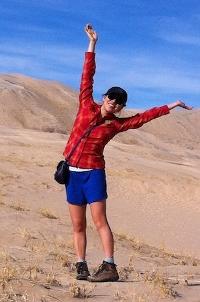Geology Student Takes Part in Philippines Mine Cleanup
January 25, 2013
Amanda Nagy

Photo credit: Angela Kwon
At Oberlin, the period between fall and spring semester known as winter term is an opportunity for growth, reflection, and new experiences. Throughout the month, formal classes are suspended, and students have the option of completing a project of their choice for half or full credit. Regardless of the project, the central objective of winter term is to continue the process of personal and academic discovery outside the confines of a classroom.
Third-year geology student Angela Kwon has used winter term to make scientific discoveries on campus and in her home state of California. For her third winter term project, Kwon went to the Philippines to study the environmental effects of waste from the country’s largest gold mine.
Kwon, who is also pursuing a minor in environmental studies, ventured abroad for a research internship with the Environment Monitoring Lab at the National Institute of Geological Sciences (NGIS). NIGS is one of seven research and academic institutes of the University of the Philippines Diliman College of Science.
Kwon, who is from Palos Verdes, California, says she chose the internship because it relates to her interests in hydrology and environmental studies. For her first winter term, she interned as a student operator for the Living Machine in the Adam Joseph Lewis Center for Environmental Studies.
Mining in the Philippines is a vital industry, but it carries environmental costs. In August 2012, a dam holding mine tailings (waste) for Philex Mining Corp., the country’s largest mining operation, began leaking. Pressure from years of accumulated tailings and unusually heavy rainstorms turned the leak into a full-fledged mine waste spill, releasing at least 20 tons of mine tailing. According to environmental advocates, the spill was the worst mining disaster in the Philippines in terms of volume.
“Not only have families around the mine been affected, but the communities down river must also deal with toxic substances in their waters,” Kwon says.
For her internship, Kwon worked alongside Carlos Primo David, head of the Environment Mining Lab at NGIS. David is leading a project to mitigate mine waste with fast-growing grasses and nitrogen-fixing legumes.
As Kwon explains, mining waste can pose risks to people’s health and may tip the natural balance of the surrounding ecosystem. Another problem in mined out areas is the loss of vegetation cover. “Continuous mining operations can turn a once verdant piece of land into a barren field. Unfortunately, conventional reforestation methods have proven to be ineffective when done over mine waste areas.”
According to David, grasses are the solution to recondition mine waste. His project employs fast-growing grasses and nitrogen-fixing legumes, which are believed to tolerate the harsh mine waste environment and transform it geochemically to make it habitable for other plants. The project started right after the mine spill and will end in July; being in the middle of the project gave Kwon the opportunity to fully immerse herself in the different studies and field surveys.
“One of the greatest parts of being a geology major is how easy it is for me to take what I learn in the classroom and apply it to the real world. It’s exciting to learn about the Philippines through geological terms in addition to cultural and social immersion.”
You may also like…
Josh Nolan Named Vice President, General Counsel, and Secretary at Oberlin
Distinguished attorney brings extensive experience in higher education law.
Learning by Teaching: Oberlin Students Share Global Music with Young Learners
College and Conservatory students in PACE 103 prepare local children for an immersive community concert at Oberlin.
Nuiko Wadden ’02 Joins Oberlin Conservatory Faculty as Assistant Professor of Harp
The versatile musician brings extensive opera, orchestral, and contemporary music experience to her role


